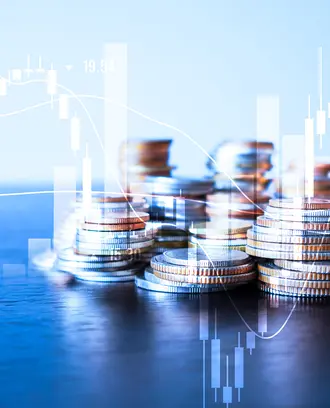Credit: Mykola Mazuryk / Shutterstock
When investors construct portfolios, they look to the past for clues about what the future may bring, assuming that, while history may not repeat itself, it often rhymes.
That is, until the arrival of COVID-19, a “black swan event” that few saw coming.
“It was something that came about suddenly, and it had pretty devastating consequences for the economy and, at least for a while, for the financial markets, although they did recover,” saidsenior lecturer in finance at MIT Sloan.
This got Kritzman thinking about ways investors could build portfolios to resist the shock of an event like a pandemic while accounting for ongoing “drift” factors — the kind of events like climate change or technology replacing human workers that unfold over years but still have the potential to greatly impact markets.
“Our research was motivated by the fact that we’re living through a pandemic, and we’re simultaneously living through climate change,” said Kritzman, who is president and chief executive officer of Windham Capital Management and a senior partner of State Street Associates. “You can have one portfolio for pandemics and another for climate change — but what if you could have one portfolio that addresses both?”
To answer this question, Kritzman collaborated with co-author David Turkington, a senior managing director at State Street, on developing a new approach to portfolio formation, and the two documented their efforts in a working paper, “History, Shocks and Drifts: A New Approach to Portfolio Formation.”
A portfolio that can handle ‘real-world complexities’
Traditionally, investors have constructed portfolios by using mean-variance analysis, a well-known approach based on a mathematical framework that was invented “long before the kind of computational power that exists today.”
It’s limiting, Kritzman said, because it relies on using a single horizon (say, one to three years) and “leaves out a lot of features of the data because you're forced to use elegant mathematics to summarize your expectation of the future in succinct statistics.”
Kritzman and Turkington make a more detailed use of available data in their approach. First, they account for history, shocks, and drifts by creating return samples for each. Then, they combine the individual samples into one composite sample and use algorithms to incorporate an individual investor’s appetite for risk. Doing so allows the authors to account for both short-term and long-term outcomes.
“By basing the portfolio on all of the returns — rather than just a statistical summary of the returns — we can account for a lot of real-world complexities that get ignored in traditional mean-variance approach to structuring portfolios,” Kritzman said.
“It allows us to consider every possible feature of the data because it’s looking at every single individual return that occurred for these asset classes. That means we can build portfolios that are sensitive to peculiarities in the data that would otherwise be hidden from the portfolio construction process.”
Going forward, the authors plan to begin applying their approach, building portfolios that consist of:
- Defensive assets to help guard against shocks.
- Growth assets to capture the fact that over time, risky assets tend to deliver higher growth in wealth than defensive assets.
- And opportunistic assets that seize on opportunities created by factors such as climate change.
In addition, for those who can’t stomach the thought of what another pandemic might do to their portfolio, Kritzman said that portfolios can be designed to be more resilient.
“If you want a portfolio that's going to be more resilient to shock, then we could include more shocks in our sample, maybe more shocks than actually occurred in history,” he said. This might include the time frame around COVID-19, the financial crisis, and the Fukushima nuclear disaster; investors could re-enter the data a second time if they wanted to exert even more caution.
An aid for ESG investors?
This approach to portfolio construction is especially applicable to investors who want to capture shock and drift opportunities in environmental, social, and governance assets.
Related Articles
In the short term, climate-related events such as hurricanes will undoubtedly continue having an impact. And in the future, as climate change becomes more prominent in people’s minds, “maybe ESG-type assets will do well in a climate change environment because people who are concerned about climate change would like to invest more in companies that are behaving in a more sustainable way,” Kritzman said.
The authors’ shocks and drifts portfolio approach captures both trends.
“Within climate change, you can have certain asset classes just gradually gaining an advantage over other asset classes as investors become more responsible for the environment,” Kritzman said. But you can also have “certain weather events or the kinds of things that might result from climate change that could cause an abrupt change for certain asset classes,” such as the insurance industry.
“ESG would be an opportunity that we want to be able to capture if we continue to worry about climate change,” Kritzman said. “Climate change is not all about bad outcomes for investors.”



